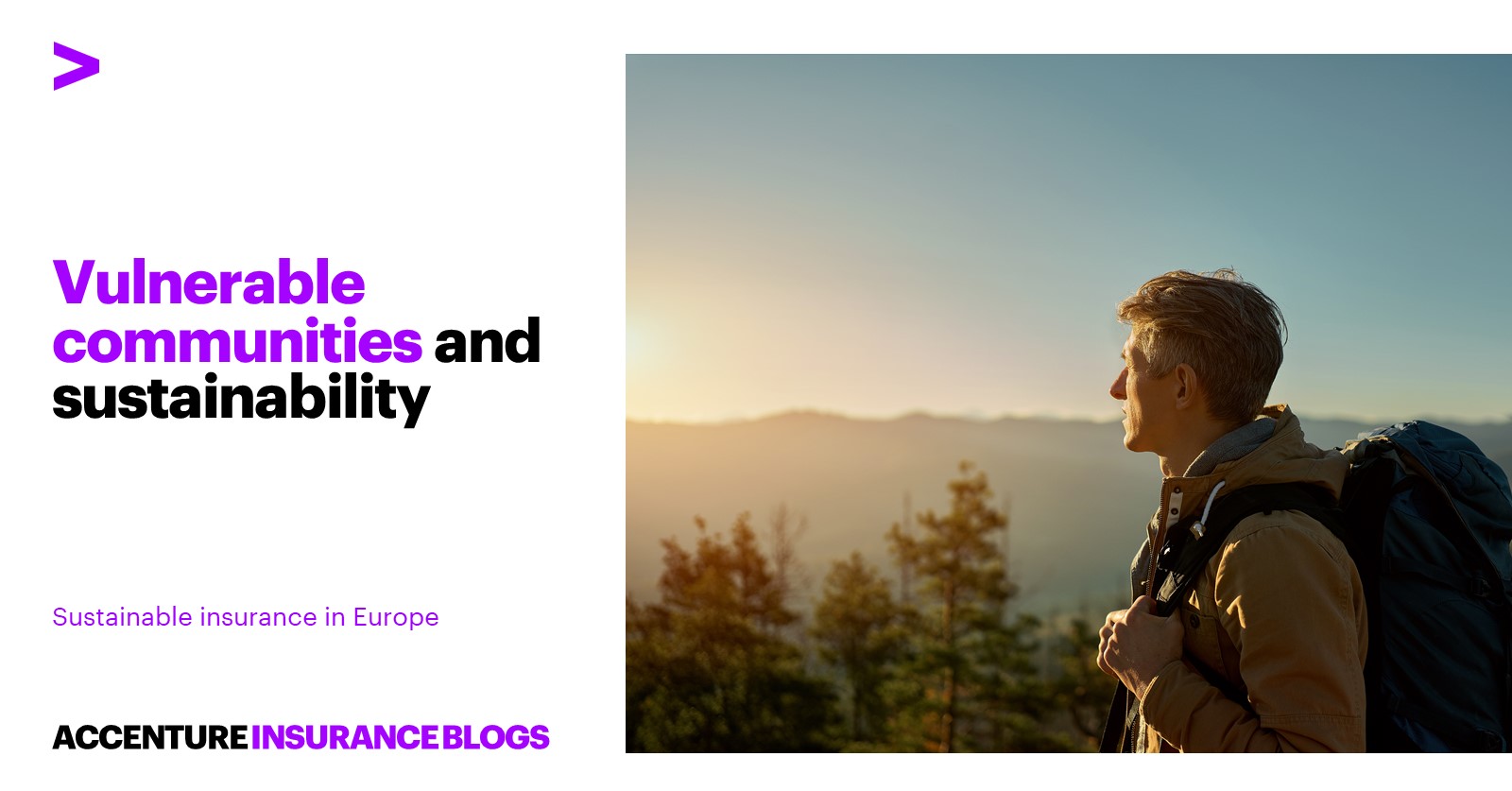Why the vulnerability gap matters to insurers

Sustainability is an issue of global importance, with unique implications for insurers. In this series, I have been discussing the nuanced definition of sustainability for insurers in Europe and how this relates to their overall strategy and products. While concerns regarding the environment and climate change are prioritised, there is another facet to this that insurers need to be clear on. Insurers help their clients manage risk, but what happens when some communities are more at risk than others. A key social goal for the insurance community has to be a focus on improving coverage and affordability in historically underserved areas.
Awareness of customer vulnerability
What does this involve? At a basic level, we need to create products and solutions that enable vulnerable and low-income households with the means to protect themselves against risk. Following the COVID-19 pandemic, this is more important than ever, as many household incomes may have been compromised. Italy, for example, has prioritized this in the training of insurance professionals, with the ANIA Academy partnering with CeTIF (Research Centre on Technologies, Innovation and Finance of the Università Cattolica del Sacro Cuore) to offer the first second-level master’s in insurance management, with a focus in responding to the challenges of the “new normal.”
Leveraging data for empowerment
When it comes to climate change, insurers need to work on providing accessible and affordable products that respond to disasters but also help the communities insurers serve to prepare for the ongoing impacts of climate change. Thankfully, with tools at our disposal such as aerial imagery and machine learning, we can inform a deeper understanding of risk and generate useful data that helps us serve vulnerable communities better.
The impact of this data can be seen in the UK, where local insurers are involved in a range of activities that support the national and regional forecasting of future weather and catastrophe patterns. These data outputs and modelling not only inform their business practices, including pricing decisions and risk-based capital assessments but also shape the UK insurance sector’s dialogue with policymakers.
On a global level, data can help us understand the needs of our customers. As Kenneth Saldhana discussed in his recent Insurance News Analysis, the insurance industry’s role in creating greater resilience for vulnerable countries and communities was a key part of the discussion at COP26 and a driver of the new Global Resilience Index Initiative. The IDF, first announced at the COP21 Paris climate talks in 2015 and formally launched the following year, unveiled several initiatives during the recent COP26 talks in Glasgow, including the Global Resilience Index Initiative (GRII), which will provide a globally consistent model for the assessment of resilience across all sectors and geographies. This will be curated on an open-source basis.
Cultivating understanding
Climate resilience ultimately begins before a climate emergency. Insurance customers, especially those in vulnerable areas, need to be equipped to deal with climate threats and their economic impact. Insurers in Europe are responding to this need through a broad range of awareness-raising campaigns. In Germany, for example, insurers work in partnership with state authorities, consumer protection organisations, architects and other stakeholders to raise awareness of the effects of climate change and natural hazards; the benefits of loss prevention, and best practices with regards to natural catastrophe-resilient buildings. This is illustrated by Germany’s relatively low protection gap; and an insurance penetration rate for natural perils such as storms or hail at more than 90%.
When it comes to protecting vulnerable communities against the impacts of climate change, we as insurers can help break the cycle by investing in protection and resilience earlier and generating awareness through data. This should be done in the context that climate incidents are not just happening to individuals, but to communities and our planet.
Get the latest insurance industry insights, news, and research delivered straight to your inbox.







